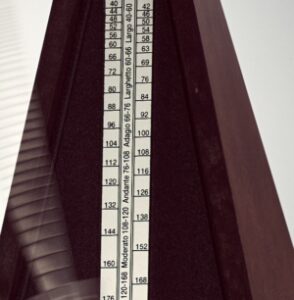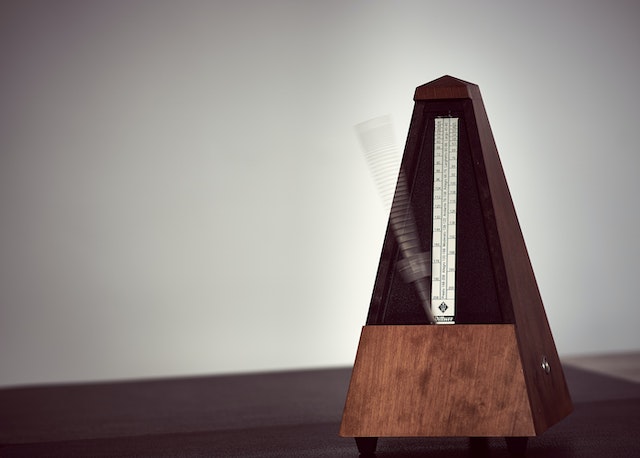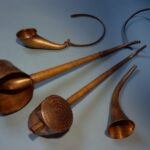In this article, find all the most frequently asked questions and answers about the musical metronome!
What is a musical metronome?
A metronome is a device that makes a click or some other sound at regular intervals. This interval can be set by the person using a metronome. These intervals are measured in beats per minute (BPM). Most mechanical metronomes will also make a visual motion (with a pendulum moving left and right) in synchrony with the set pulse.
In our digital age, there are quartz or digital metronomes available, nowadays even apps users can download to their devices, like a tablet or phone.
What the name metronome means?
The name metronome comes from ancient Greek words. Métron meaning measure, nomós means melody.
Who invented the metronome?
The metronome, or metronome like devices, have a long history and its development over the centuries should be observed as a continuous improvement.
First to invent a metronome like machine was the polymath Abbas ibn Firnas (810-887), an Andalusian genius who was an inventor, chemist, engineer, poet and musician.
At the end of the 16th century, the astronomer Galilei also worked on the concept of a pendulum, later the French musician Etienne Loulie produced an almost metronome. His device did not make sound.
The next in line perfecting the metronome was Dietrich Nikolaus Winkel. The German born inventor (who later moved to and lived in Amsterdam) in 1814 discovered that a pendulum weighted on both sides of the pivot can measure time more precisely. Winkel was not careful and did not protect his intellectual property!
Two years later, the opportunist inventor and showman, Johann Nepomuk Maelzel (or Mälzel) refined the device and patented it as Maelzel Metronome.
Was the metronome invented for Beethoven?
No, the metronome was not invented for Beethoven, however, he was the first significant composer to use it. Beethoven and Maelzel were friends (the inventor made ear trumpets for him) and having some input or inspiration by the Composer in the creative process cannot be ruled out.
Did Beethoven use a metronome?
Yes, he did. He received one from Maelzel as gift and in the beginning was enthusiastic about it. Today, many scholars believe that Beethoven might have misread the numbers or his device was faulty, as many of his tempo markings (MM, Maelzel Metronome or later Metronome Marking) are way off and if followed closely result very bizarre music.
What do the numbers on a metronome mean?

A typical mechanical metronome will have both numbers and old-fashioned Italian tempo markings. The numbers mean the ticks per minute. For example, 56 means 56 ticks per minute, which is approximately adagio. Or 132, that is 132 ticks or allegro.
Does a metronome ever stop?
Yes, they do. Either the spring energy (in a mechanical device) or the battery (in a quartz or digital) will eventually run out. A typical mechanical metronome runs for 20 minutes.
Why musicians use metronome?
Musicians use the metronome when practicing. The aim of using such a device is to learn and improve timing in play, to develop an internal sense of tempo.
What are the types of metronomes?
The main types of metronomes are: mechanical, quartz and digital.
Should you always practice with metronome?
It is highly recommended to practice with a metronome! It helps to develop the correct inner sense of tempo, helps to improve technical and rhythmic skills.
In general, one should start practicing with a slower beat number and then gradually increase it up till the correct number.
Can a metronome help you sleep?
In theory giving the mind something to concentrate on will center focus and calm the brain down. Using a slower beat number can decrease heartbeat, something that naturally happens in sleep. Some place a mechanical clock in the bedroom for this very same reason.






